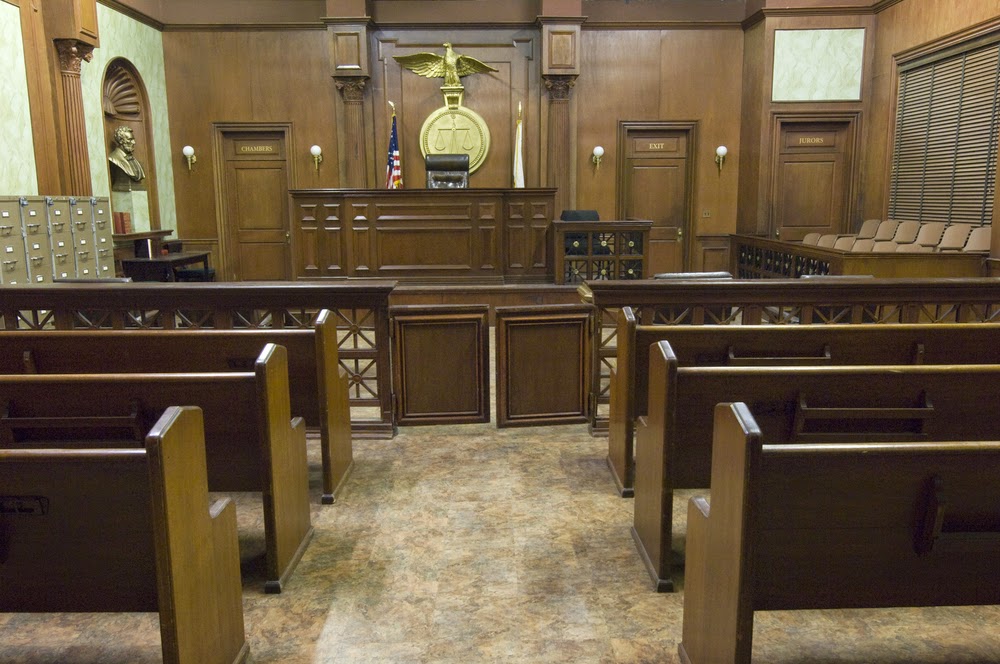News Media in Missouri Courtrooms
News media in the courtroom: one of the debates that has surrounded our legal system for many years. The laws surrounding news media and cameras within the courtroom have always been complicated and difficult to understand. The Law Offices of Phillips, McElyea, Carpenter & Welch, P.C. want to provide you some background and history about news media in the courtroom. Information was gathered from www.courts.mo.gov and www.uscourts.gov.
Background
Gaining permission to televise, record, broadcast, or photograph courtroom proceedings has always been difficult, but it became especially challenging after the Dr. Sam Sheppard trial in the 1950s. In this high profile murder trial (the television series and movie The Fugitive was based on this case), the media grossly exaggerated their coverage and displayed blatant biases in their work. After this case, many courts including, Missouri state courts, firmly closed their doors to the media.Media History of the Federal Courts
Electronic media coverage of criminal proceedings in federal courts has been expressly prohibited under Federal Rule of Criminal Procedure 53 since the criminal rules were adopted in 1946. Rule 53 states: "[e]xcept as otherwise provided by a statute or these rules, the court must not permit the taking of photographs in the courtroom during judicial proceedings or the broadcasting of judicial proceedings from the courtroom."In 1972 the Judicial Conference of the United States adopted a prohibition against "broadcasting, televising, recording, or taking photographs in the courtroom and areas immediately adjacent thereto." The prohibition, which was contained in the Code of Conduct for United States Judges, applied to criminal and civil cases.
In October 1988 Chief Justice Rehnquist appointed the Ad Hoc Committee on Cameras in the Courtroom.
At its September 1990 session, the Judicial Conference adopted the report of its Ad Hoc Committee on Cameras in the Courtroom. The report recommended a pilot program permitting electronic media coverage of civil proceedings in six district and two appellate courts. The Conference also struck the prohibition contained in the Code of Conduct and adopted a policy on cameras.
The new policy stated:
"A Judge may authorize broadcasting, televising, recording, or taking photographs in the courtroom and in adjacent areas during investigative, naturalization, or other ceremonial proceedings. A judge may authorize such activities in the courtroom or adjacent areas during other proceedings, or recesses between such other proceedings, only:
(a) for the presentation of evidence;
(b) for the perpetuation of the record of the proceedings;
(c) for security purposes;
(d) for other purposes of judicial administration; or
(e) in accordance with pilot programs approved by the Judicial Conference of the United States."
Missouri Courts Today
Many years passed before Missouri courts began considering any form of news media coverage back into the courtroom. In the 1990s, however, things began to progress quickly in Missouri state courtrooms.- 1991 - A specially-created task force advised the Supreme Court of Missouri to allow some news media in Missouri courtrooms under controlled conditions on an experimental basis.
- 1992 - The Supreme Court of Missouri turned this temporary permission into the Court Operating Rule 16, which allows broadcasting, televising, recording, and taking photographs in all appellate courts in Missouri and eleven judicial circuits.
- 1994 - Court Operating Rule 16 expanded to include all Missouri courtrooms.
- 1995 - The Supreme Court adopted Court Operating Rule 16 to address matters such as advance notice by the media, placement of the cameras in the courtroom, and restrictions on camera or audio equipment.

Pros
- Allowing cameras in the courtroom make the judicial process more accessible to all Americans.
- Knowing that the proceedings are available to the public public encourages everyone to make sure the judicial proceedings are conducted in a dignified manner.
Cons
- The courts cannot guarantee that Court Operating Rule 16 will prevent another case like the Sam Sheppard trial.
- The success of the rule is only as strong as its weakest link; it relies on the total cooperation between media representatives, media coordinators, and the state's courts.
The debate on cameras and media in the courtroom will likely continue in our legal system. Here is another resource to view the actual Missouri Supreme Court ruling on news media in the courtroom - http://www.courts.mo.gov/page.jsp?id=333
We Are There When You Need Us.
Subscribe to our blog for interesting legal information, announcements, and happenings around Lake of the Ozarks.
---------------------------------------------------------------
Law Offices of Phillips, McElyea, Carpenter, & Welch, P.C.
The choice of a lawyer is an important decision and should not be based solely on advertising. When you need a knowledgeable attorney, we invite you to contact us to set up a consultation. Evening and weekend appointments are available. We have access to interpreters.
We accept Visa, MasterCard, and Discover
Phillips, McElyea, Carpenter & Welch, P.C.
85 Court Circle N.W., P.O. Box 559
Camdenton, MO 65020 GET A MAP
(573) 346-7231 - Telephone
(888) 236-2485 - Toll Free
(573) 346-4411 - Fax





Comments
Post a Comment